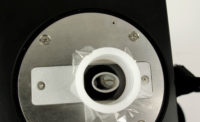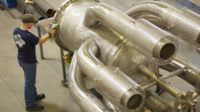Current trends for quality assurance and quality control (QA/QC) procedures in metal manufacturing plants are becoming more stringent. The need for 100% measurements for alloy verification is frequently becoming part of these procedures. End customers in critical industries such as aerospace, power generation, and petrochemical have compulsory quality assurance procedures that must be adhered to throughout the supply chain. Handheld X-ray fluorescence (XRF) is a popular solution for alloy verification because it is a nondestructive technique, provides on-the-spot information, and is highly portable, making it ideal throughout the manufacturing process, including final inspection prior to shipping.
Typically, a handheld XRF (HHXRF) device is used to manually verify the alloy types. Modern HHXRF instruments have wireless connectivity capabilities that enable you to seamlessly integrate your XRF results into production and ERP systems, a helpful feature for meeting quality control requirements and reporting as well as future proofing for Industry 4.0. Reports can be in the form of dashboards or alerts of possible incorrect material. This important data can be viewed in remote management control locations.
HHXRF for Alloy Identification
To reduce the burden on the operator and help ensure complete results for all components, an XRF API (application programming interface) that controls an XRF analyzer can be integrated in a fixed position at the production line or robotically dependent on material flow, component shape, and size.
Most commercial fabrication alloys can be analyzed adequately on a single handheld XRF analyzer with minimal user involvement when alloys types change from one batch to another. Whether you have flat, curved, or irregular surfaces, XRF provides accurate information without the need to touch the component being measured. This makes handheld XRF analyzers versatile tools that can easily be automated or robotized whether you are producing ingots and castings, machining from bar stock, or forming components with additive manufacturing techniques.
Handheld XRF analyzers are all rugged, dust and splash resistant, and designed to quickly identify alloys in typical industrial environments. In fact, many results can be obtained within a matter of seconds.
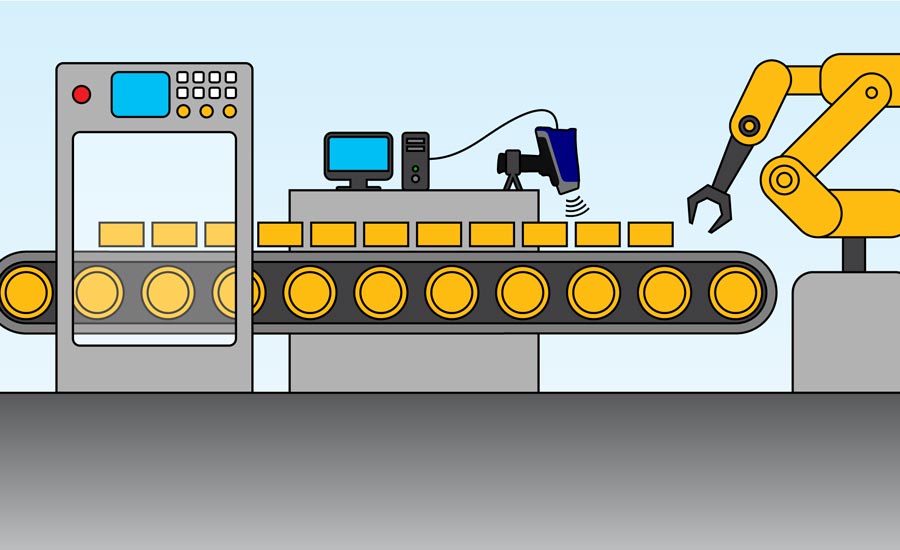
Handheld XRF and the XRF API provide real-time monitoring and data access to critical process controls.
Which Analyzer Is Right for Your Alloys?
Select an XRF analyzer with a large-area silicon drift detector (SDD) for rapid in-line measurements of wrought aluminum alloys such as 2000, 3000, and 5000 series alloys, cast aluminum alloys, titanium alloys, and alloys that contain light elements (magnesium, aluminum, silicon, and phosphorus–sulfur) such as SS303/304 or Monel 400/K 500. A standard SDD is ideal where either higher concentrations of light elements are present or alloys with similar elemental specifications are being manufactured.
An analyzer with a Si-PIN detector is suitable where identification is purely achieved with transition element analysis, including many fabrication alloys such as stainless steels, nickel alloys, and many 7000 series wrought aluminum alloys.
Getting Started with the API
With the API connected to a handheld XRF analyzer, remote start and stop tests can be enabled to obtain pass/fail and grade match results. The XRF data can be interfaced with a barcode reader to include relevant production information such as customer PO number or part number. It also enables viewing of status messages.
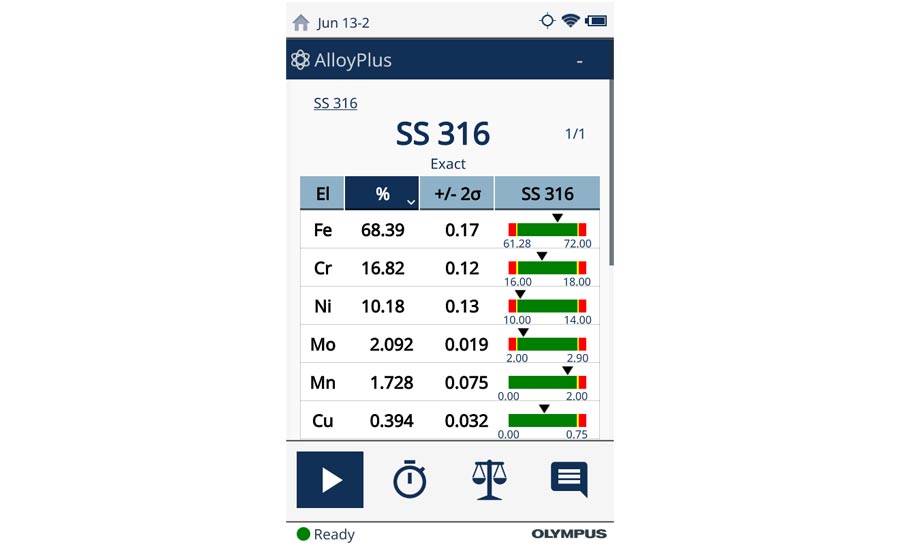
Example result of testing stainless 304 with a handheld XRF.
Results in Real Time
Handheld XRF and the XRF API provide real-time monitoring and data access to critical process controls. The XRF API is a network socket-based application programming interface that enables third-party developers to use their software to communicate and control an XRF analyzer.
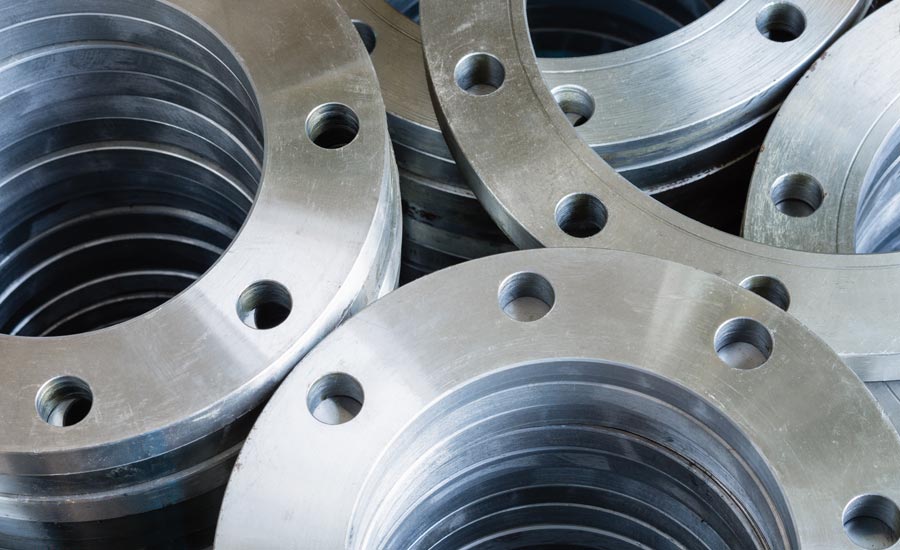
Systems such as the handheld XRF can be paired with automation or robotics can be programmed by the user’s engineering and IT staff or by using a competent plant integration contractor.
Regulations, specifications, and ordering requirements have only become more stringent, and material quality must meet specifications and be of the correct material composition. There is no room in the supply chain for quality issues. Current advances in handheld XRF technology provide users with analytical results in real time for QA/QC. In the hands of quality control or production personnel, these tools provide the information needed to make rapid changes to any dynamic control system. This technology enables manufacturers to rapidly address, understand, and monitor their manufacturing processes.

